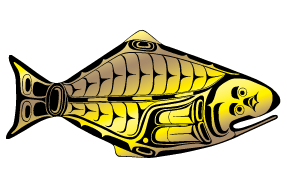The Pacific halibut recreational fishery (combined guided and unguided) is an important contributor (approximately 20%) to the total fishery-induced mortality. Under current regulations, the number of fish captured, handled and discarded by the Pacific halibut recreational fisheries is significant. Capture-related events impose stress and injury to the fish and, consequently, decrease the survival of discarded fish. Reductions in recent years of Pacific halibut catch limits place added importance for improved estimates of discard mortality rates (DMRs) applied to the recreational fishery.
In contrast to the trawl and longline Pacific halibut fisheries, DMRs have not been determined experimentally in the recreational fisheries and are currently based on DMR information generated from commercial gear using J-hooks combined with rates derived for other sport fisheries, and coarsely applied to recreational hook type and creel census data. Therefore, the IPHC initiated studies aimed at better understanding the role of fishing practices and capture conditions on injury profile, physiological stress levels and survival in the Pacific halibut recreational fisheries in order to estimate DMRs. The specific objectives of this project were to: 1) collect information on hook types and sizes and handling practices used in the guided recreational Pacific halibut fisheries of the central and eastern Gulf of Alaska (IPHC Regulatory Areas 2C and 3A) that account for a significant portion (83%) of coastwide recreational mortalities; 2) quantify relationships between gear types employed and the size composition of captured Pacific halibut; 3) characterize injury profiles and physiological stress levels in relation to commonly-employed capture and handling protocols, and; 4) quantify and characterize survival of discarded Pacific halibut in order to evaluate the relative accuracy of currently-employed DMRs. Funding for these projects was provided by the National Fish and Wildlife Foundation (components 1-4) and the North Pacific Research Board (component 4).
In order to estimate survival of discarded Pacific halibut, 80 fish were tagged with acceleration-logging survivorship pop-up archival transmitting (sPAT) tags. sPAT-tagged fish were selected only among those fish that were classified in the “Excellent” viability category and tags were programmed to be released after 96 days. Our results yielded an estimated discard mortality rate of 1.35% (95% CI 0.00-3.95%) for Pacific halibut released in Excellent viability category that were captured and released from circle hooks. This estimate is consistent with the supposition that fish discarded in the recreational fishery from circle hooks in excellent condition have a mortality rate that is arguably lower than 3.5%, as is currently used for Excellent viability fish released in the commercial fishery (Meyer, 2007). As this estimate does not factor in mortality rates on fish in less than Excellent condition, does not inform mortality rates on non-circle hooks (J-hooks, jigs, other), nor directly applies to fish captured and released from non-charter practices, changes to the overall recreational discard mortality estimation are not currently contemplated. These results represent the first report of experimentally derived estimates of mortality of Pacific halibut captured and discarded in the recreational fishery. Current efforts are devoted to analyze collected data on capture conditions (e.g., bottom, ambient and fish temperatures; time on hook and on deck), blood stress parameters and injury and viability classifications.

